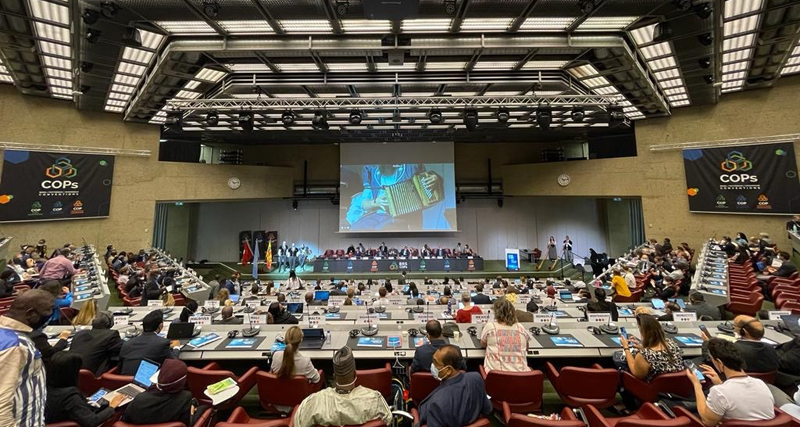- Courses
- GS Full Course 1 Year
- GS Full Course 2 Year
- GS Full Course 3 Year
- GS Full Course Till Selection
- Answer Alpha: Mains 2025 Mentorship
- MEP (Mains Enrichment Programme) Data, Facts
- Essay Target – 150+ Marks
- Online Program
- GS Recorded Course
- Polity
- Geography
- Economy
- Ancient, Medieval and Art & Culture AMAC
- Modern India, Post Independence & World History
- Environment
- Governance
- Science & Technology
- International Relations and Internal Security
- Disaster Management
- Ethics
- NCERT Current Affairs
- Indian Society and Social Issue
- NCERT- Science and Technology
- NCERT - Geography
- NCERT - Ancient History
- NCERT- World History
- NCERT Modern History
- CSAT
- 5 LAYERED ARJUNA Mentorship
- Public Administration Optional
- ABOUT US
- OUR TOPPERS
- TEST SERIES
- FREE STUDY MATERIAL
- VIDEOS
- CONTACT US
Stockholm Convention on Persistent Organic Pollutants (POPs)
Stockholm Convention on Persistent Organic Pollutants (POPs)
02-05-2025

- India has raised objections to the inclusion of the hazardous insecticide Chlorpyrifos under the Convention for global phase-out in 2021.
- Chlorpyrifos is widely used in Indian agriculture, particularly for pest control in crops like cotton and rice.
Background of the Convention
- The Stockholm Convention was formally adopted in 2001 and came into force in 2004.
- It is a global treaty aimed at addressing the threat of Persistent Organic Pollutants (POPs).
Objective of the Convention
- The core objective is to safeguard human health and the environment from harmful chemical substances.
- It focuses on regulating substances that are toxic, long-lasting, and bioaccumulative in ecosystems and food chains.
Understanding POPs (Persistent Organic Pollutants)
- POPs are carbon-based organic compounds that resist environmental degradation.
- They persist for long periods, accumulate in fatty tissues, and biomagnify up the food chain.
- These substances pose serious risks to both human and wildlife health even at low concentrations.
Key Features of the Convention
The Convention maintains a dynamic list of harmful chemicals, categorized into three annexes:
- Annex A: For elimination of listed chemicals.
- Annex B: For chemicals allowed under restricted use.
- Annex C: For substances requiring reduction of unintentional releases.
India’s Role and Position
- India has signed and ratified the Stockholm Convention, reaffirming its commitment to global chemical safety.
- However, India continues to oppose the listing of Chlorpyrifos, citing agricultural dependency and lack of viable alternatives.
- The decision reflects India’s balancing act between environmental obligations and national agricultural needs.
Mendelian Inheritance: Rediscovering the Roots of Genetics
- Scientists have recently identified the specific genes responsible for the last three traits in peas originally studied by Gregor Johann Mendel.
- Mendel is widely regarded as the father of modern genetics for his foundational work on hereditary principles.
- He conducted experiments by cross-breeding around 28,000 garden pea plants to investigate how traits are passed from one generation to the next.
- His observations focused on features such as seed shape, seed color, pod shape, pod color, among others.
Objective of Mendel’s Experiments
- Mendel aimed to uncover the underlying mechanism through which traits are inherited in living organisms.
- He selected pea plants (Pisum sativum) due to their easily distinguishable traits, short lifecycle, and ease of controlled pollination.
What is Mendelian Inheritance?
- Mendelian inheritance refers to the method of genetic transmission of traits from parents to offspring through discrete units called genes.
- This approach laid the foundation for understanding how traits are passed and how genetic variation arises.
Mendel’s Three Laws of Inheritance
- Law of Dominance
- In a cross between two organisms with contrasting traits, only the dominant trait appears in the offspring of the first generation (F1).
- The recessive trait is masked but reappears in the second generation (F2).
- Law of Segregation
- Each organism carries two alleles for every trait, which separate during gamete formation, ensuring that each gamete carries only one allele.
- This ensures that traits do not blend but are inherited independently from each parent.
- Law of Independent Assortment
- Genes controlling different traits are assorted independently of one another during the formation of gametes.
- This law explains how the inheritance of one trait does not influence the inheritance of another, promoting genetic diversity.



